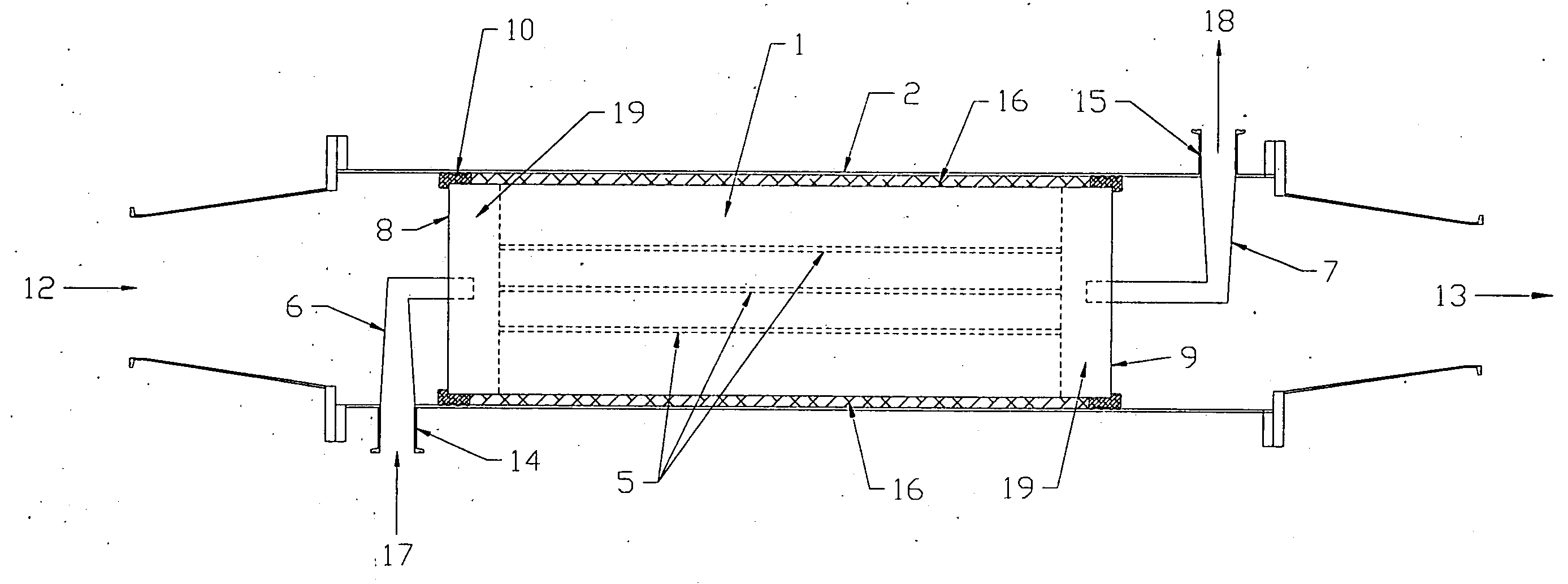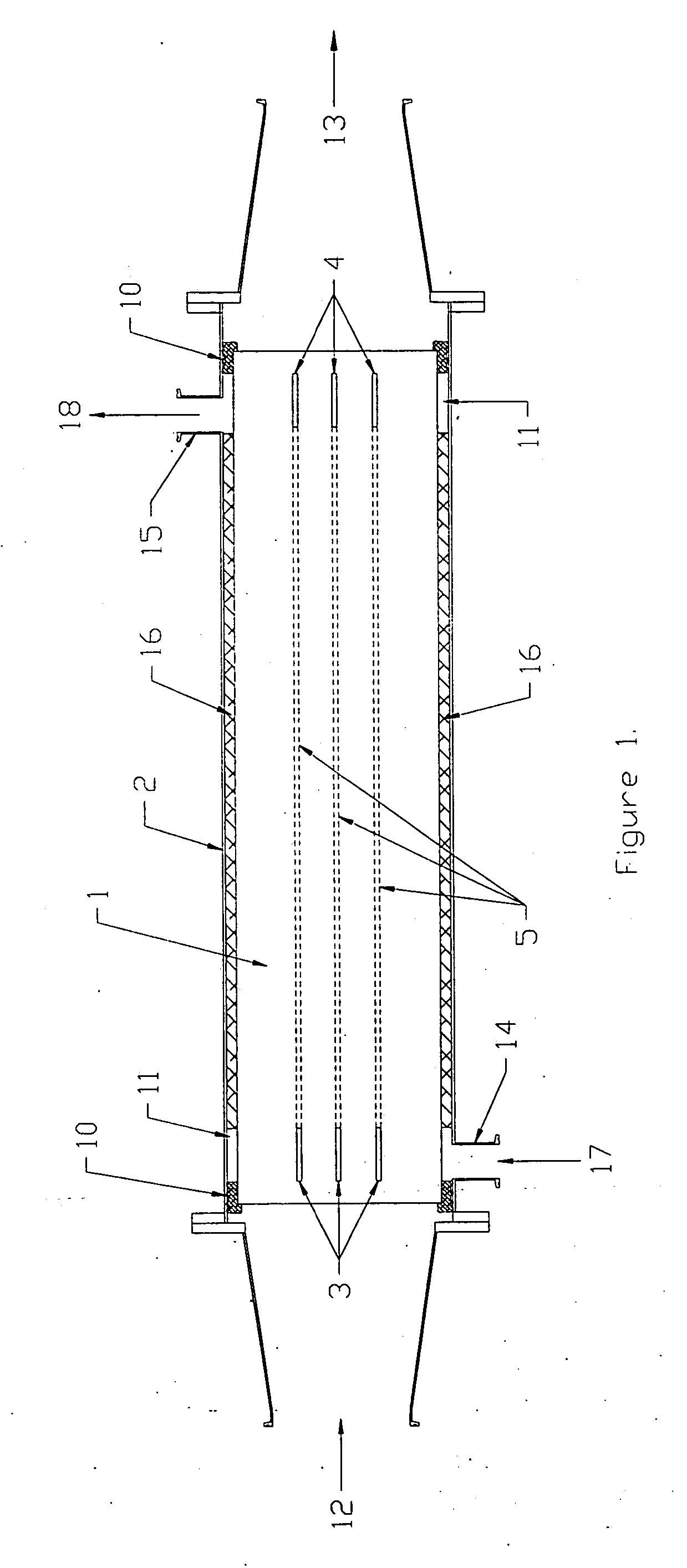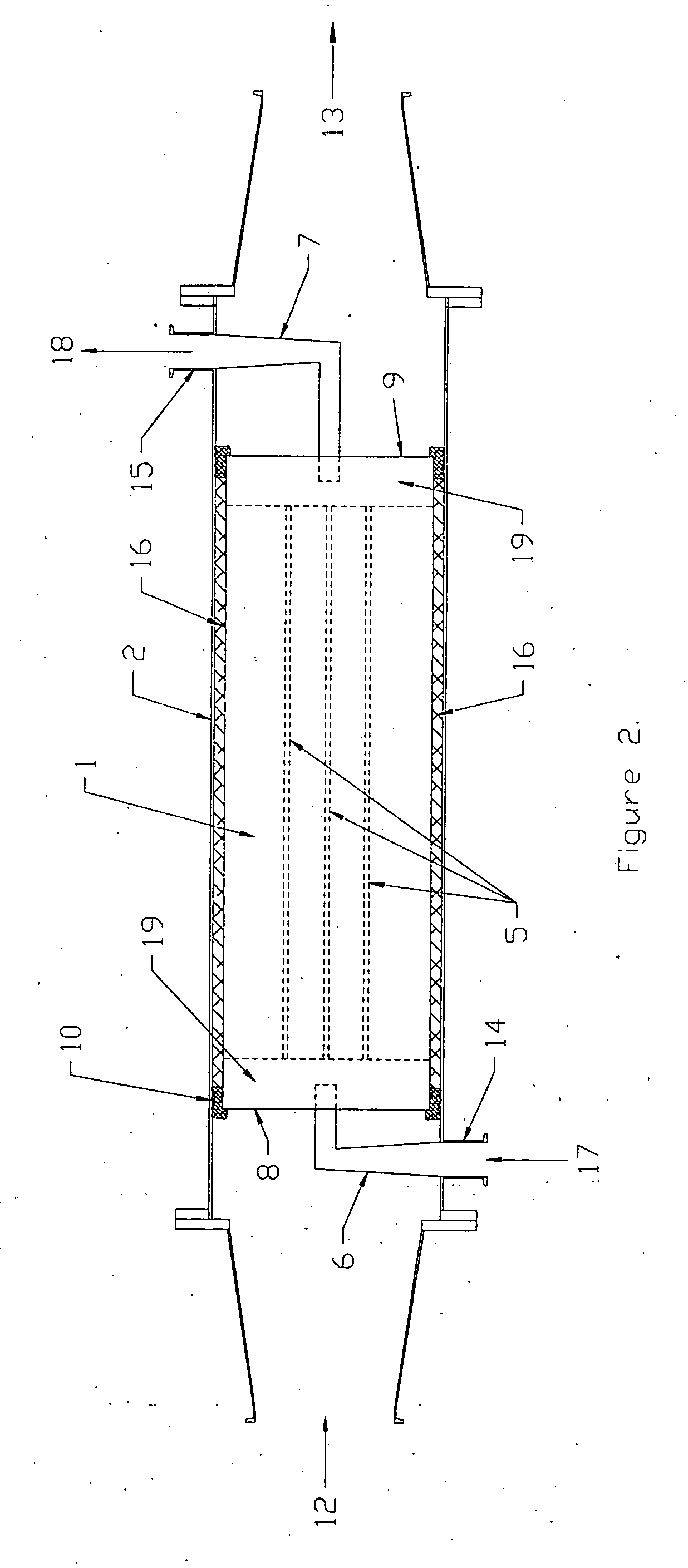Membrane devices with controlled transmembrane pressure and method of use
a membrane device and transmembrane technology, applied in the direction of membranes, filtration separation, separation processes, etc., can solve the problems of pressure drop from the feed end of the module to the retentate end, and achieve the effect of constant tmp, increased resistance in the permeable cavity, and controllable and essentially constant tmp
- Summary
- Abstract
- Description
- Claims
- Application Information
AI Technical Summary
Benefits of technology
Problems solved by technology
Method used
Image
Examples
Embodiment Construction
[0027] In FIG. 1, a monolith membrane element 1 is contained with a module housing 2, with means 10 for isolating a permeate collection zone 11 from a feedstock inlet 12 and a retentate outlet 13. The membrane element contains one or more transverse slots 3 and 4 at the feed inlet and retentate outlet ends of the element, respectively, or other channels. The slots transect a plurality of longitudinal permeate conduit chambers 5, and this constitutes one form of a permeate conduit, as described in the above-referenced Goldsmith patents. Permeate ports 14 and 15 are located on the module housing near the inlet and outlet ends, respectively. A flow resistance material 16 can be used to fill the permeate collection zone annulus situated between the membrane element and the module housing to increase the permeate flow resistance in this annular space.
[0028] In operation, depending on crossflow velocity, feed viscosity, membrane element channel diameter and channel length, an operating p...
PUM
| Property | Measurement | Unit |
|---|---|---|
| Pore size | aaaaa | aaaaa |
| Pore size | aaaaa | aaaaa |
| Length | aaaaa | aaaaa |
Abstract
Description
Claims
Application Information
 Login to View More
Login to View More - R&D
- Intellectual Property
- Life Sciences
- Materials
- Tech Scout
- Unparalleled Data Quality
- Higher Quality Content
- 60% Fewer Hallucinations
Browse by: Latest US Patents, China's latest patents, Technical Efficacy Thesaurus, Application Domain, Technology Topic, Popular Technical Reports.
© 2025 PatSnap. All rights reserved.Legal|Privacy policy|Modern Slavery Act Transparency Statement|Sitemap|About US| Contact US: help@patsnap.com



